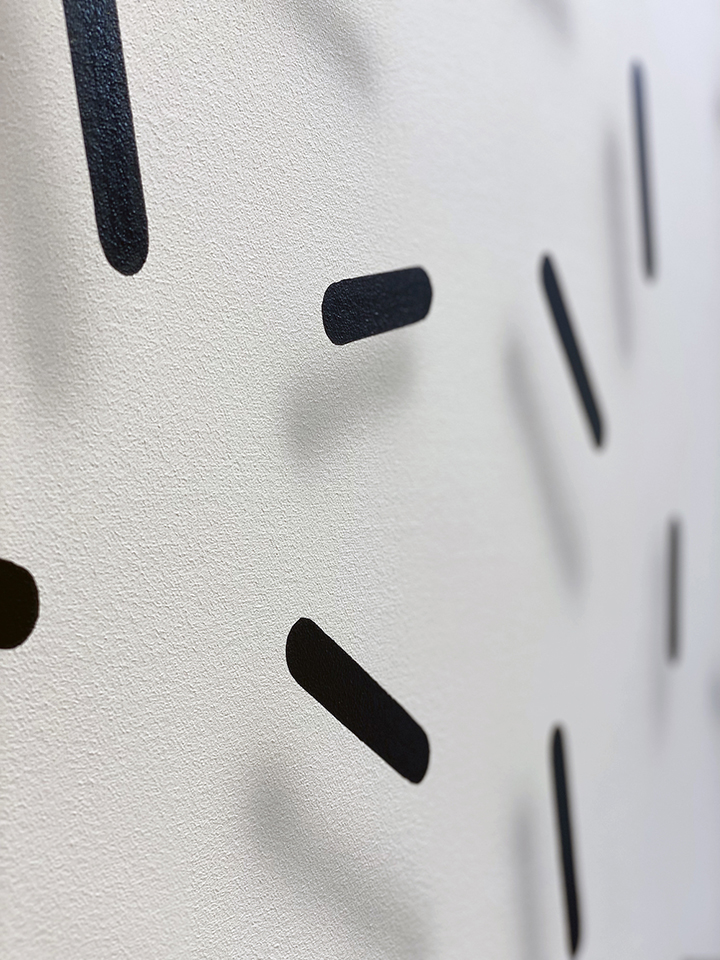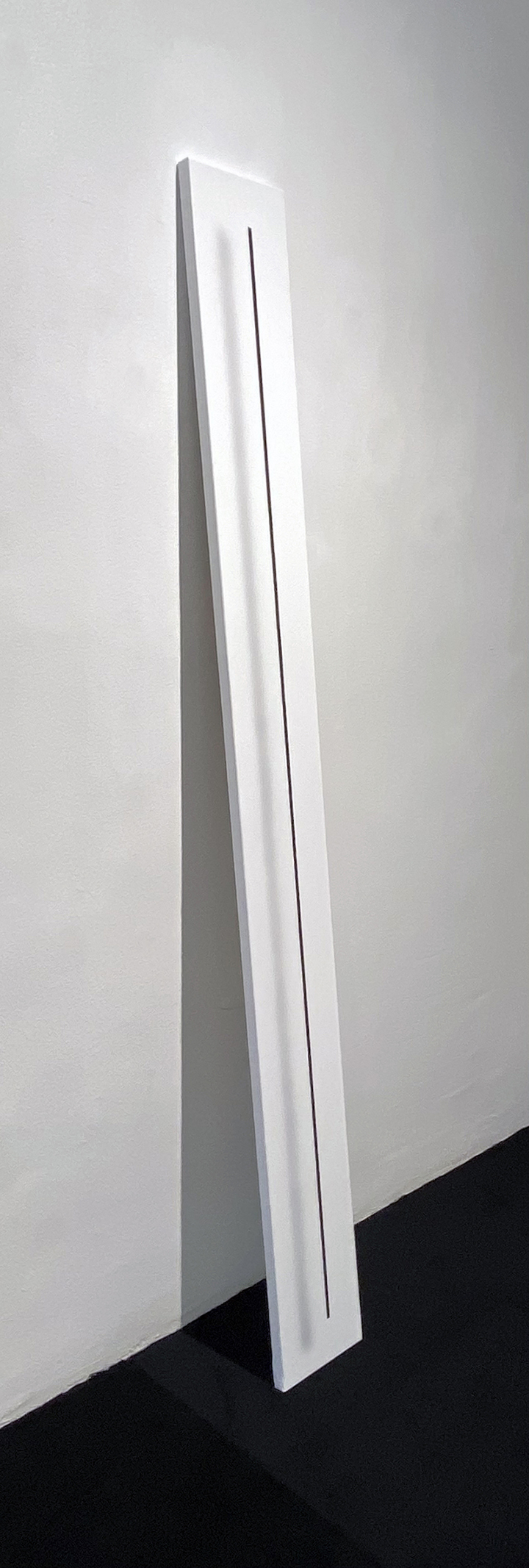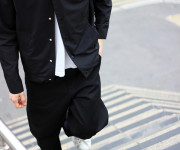Jurgis Tarabilda is one of the most successful young Lithuanian artists, presenting his work both in Lithuania and abroad. The artist recently opened his fourth solo exhibition, Lines and Dots, in Riga, the Look Gallery, where he continues to develop the theme of dot and line abstractions.
There are a number of achievements in the creative description of the young generation artist Jurgis Tarabilda. In the 2017 Young Painter’s Prize competition, Jurgis Tarabilda’s work earned an audience award. Jurgis, who organized his last exhibition in Lithuania in 2019, has worked with various artistic projects and received international recognition.
Last year, quite a few works by the artist were purchased in art fairs Positions, in Berlin, and ArtVilnius, where his works will be presented this year as well. He was also chosen as the best artist of the art fair by ArtVilnius’20 visitors, and his works are in the collections of the MO Museum and private collectors from Lithuania, Germany, the USA, Estonia, the United Kingdom, and now Latvia.
During the interview, Jurgis Tarabilda spoke about his latest exhibition in Riga, intercultural cooperation, creative work, and future plans.
Your fourth solo exhibition, Lines and Dots, was recently opened at the Look Gallery in Riga. Tell us more about this collaboration.
My first encounter with the Look Gallery took place in 2020 at the Positions art fair in Berlin. As Raivis Alksnis, the curator of the gallery said, he had been following my work on social media for a long time and after seeing my works on the display stand of the gallery Meno Niša in Berlin, he realized that this was a great opportunity to invite me to hold an exhibition in Riga. Look is quite a young gallery, only in its second year, and is a completely private initiative created by young, ambitious people.
Because of a very strict quarantine that began at that time, the plans for the exhibition were postponed indefinitely. Nevertheless, we kept in touch with the Look Gallery, and an idea emerged to implement an exchange of artists in the galleries – from the Meno Niša Gallery, I am presented in Riga, and one of the Look artists, Janis Šneiders, will hold an exhibition in Vilnius next year.
Could you compare the Latvian and Lithuanian art world and exhibition visitors? Have you noticed any differences?
Due to the post-pandemic situation, now is probably not the best time to get a certain impression of the Latvian art field, because the quarantine turned out to be even stricter there than in Lithuania. What I managed to see in Riga showed that in Lithuania, from art events to private and institutional initiatives, everything is happening a little more actively. Meanwhile, I did not notice a big difference between the visitors of the exhibition, most of them were young people who are interested in contemporary art.
When talking about your work, the exhibition Lines and Dots in Riga being no exception, you often emphasize the importance of space. The Look Gallery is small and intimate – were you thinking about future spaces when creating your works?
As the pandemic situation eased, we started to coordinate the exhibition plans in more detail. I created most of the works precisely for this space, I went to Riga to see it. The gallery space itself is quite specific, previously there was an entrance to the courtyard, later it turned into a bar, and only recently the space was adapted for the gallery.
The gallery is relatively small, so my main goal was not to reduce it even further with the works. Also, the gallery floor was colourful with specific granite patterns, so I knew exactly that I would like to create as seamless space as possible with as little extraneous visual interference as possible. Since all the works on display in the exhibition are black and white, I decided to cover the floor with a black carpet. This solution worked not only visually, but also gave a certain physical feeling while walking in the gallery space.
You are an interdisciplinary artist, you graduated from VAA with a degree in sculpture, you work with painting, photography, installations, neon light technologies, etc. Could you single out which medium is closest to you?
It’s pretty hard to single out a single medium. I’ve probably worked mostly with painting over the last year, but I really wouldn’t want to single it out as the closest to me. As for the theme of lines and dots, it arose through experimentation. I was looking for opportunities for a narrative to appear in complete abstraction, which would not provide any visual information but at the same time would not remain just as a certain combination of colour and gesture, to talk about the theme of time and space.
The painting was the medium I wanted to experiment with more at the time. However, at the same time, I am experimenting with other media, maybe I am not publishing certain results yet, but I think my next exhibition in Vilnius will be completely different from what it has been until now.
What does your creative day and studio look like and how are ideas born? Could you give some examples?
I’m not a studio artist, although I go there every day. As I mentioned about experimentation, it isn’t limited to only the studio. Nor do I create works just for their own sake. It is important for me to know if there will be an exhibition or any project, to know the specific time and place. Then I start creating the whole, not a single work. I don’t have that romantic viewpoint now, when it comes to talking about ideas and their inspiration, maybe I don’t believe in inspiration altogether. I think a very subjective and complex entirety is needed for a work to emerge.
You mentioned that you avoid being specific and predictable in your work. But still, each artist has their own distinctive style. How would you name your own?
To tell you the truth, I got a little scared when my recent works of lines and dots received such attention and popularity. I started to hear comments that those lines were becoming my signature style. I think it is too early for a young artist to discover their peculiar style (perhaps I am talking more about a visual style), it is not good for their further development as an artist. For me, creativity is a constant discovery. Therefore, I would like this recognizable style of mine to be my particular attitude or direction of thinking, not the visual expression of the work.
Do you collect works of art? If so, who are your favourite artists?
I don’t know if it could be called a collection, but my wife Gabija and I have already purchased a couple of works of art. One of them is a drawing by Gintaras Makarevičius, and we recently purchased a technical drawing of Julijonas Urbonas, Euthanasia Coaster. And now we have a few works we like in mind, so I believe that the collection will grow in the near future.
What are your future creative plans?
Although the exhibition in Riga opened only a few weeks ago, I am already thinking intensively about the exhibition planned for next year in Vilnius. Also, on September 9-12, several of my works will be presented by Meno Niša Gallery at the Positions art fair in Berlin, and in October, there will be the international art fair ArtVilnius’21.
Thank you for the interview!
Jurgis Tarabilda’s exhibition Lines and Dots in Riga’s gallery Look (Gertrudes street 62a) will run until September 11.

















